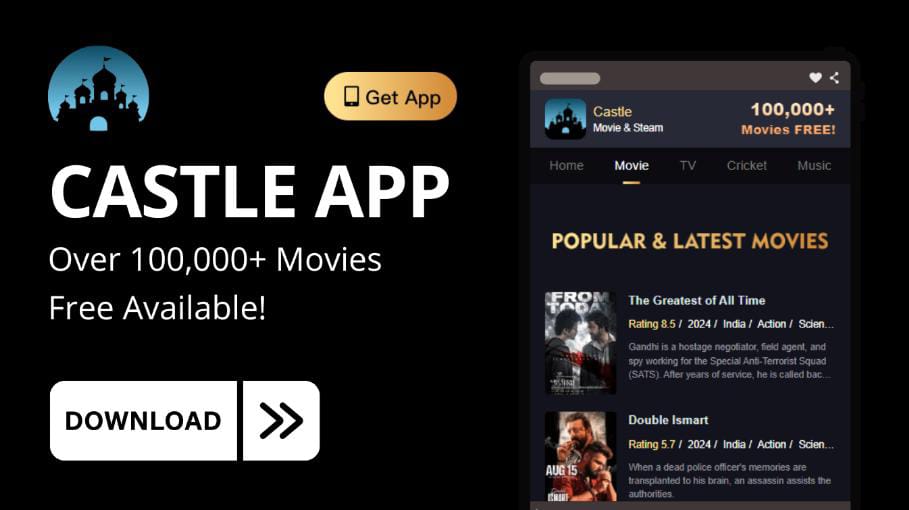In today’s digital age, social media platforms have become indispensable tools for businesses aiming to connect with their target audience. The vast array of social media channels available offers unique opportunities for brands to engage with diverse demographics, foster community, and drive sales. However, the sheer number of platforms can also be overwhelming, making it crucial for businesses to strategically select and utilize the channels that best align with their objectives and audience.
Whether you’re a small business owner, a marketing professional, or an entrepreneur looking to amplify your online presence, this comprehensive guide will provide you with the insights and strategies needed to navigate the ever-evolving world of social media marketing. Let’s delve into it!
II. Choosing the Right Social Media Platforms
In today’s digital age, businesses and brands have a plethora of social media platforms to choose from, each offering unique features and catering to different audiences. Selecting the appropriate social media platforms is crucial for reaching your target audience effectively and maximizing your marketing efforts.
Here, we will explore three of the most prominent social media platforms—Facebook, Instagram, and LinkedIn—and discuss how each can be leveraged to achieve your marketing goals.
1) Instagram: Visual Appeal and Younger Audience
Instagram is a visually-driven platform that attracts a younger demographic, particularly Millennials and Gen Z. With over 1 billion monthly active users, Instagram offers a vibrant space for brands to showcase their products and services through high-quality images and videos. The platform’s emphasis on aesthetics makes it ideal for industries such as fashion, beauty, travel, and food.
Harnessing the power of Instagram’s diverse features, such as Stories, Reels, and IGTV, opens up a world of possibilities for businesses looking to boost their online presence. The ephemeral nature of Stories and Reels makes them perfect for creating quick, captivating content that can instantly grab the attention of your target audience. With the strategic use of hashtags, location tags, and collaborations with influencers, brands can significantly enhance their visibility and expand their reach on the platform. Whether you are aiming to promote a new product, showcase behind-the-scenes glimpses, or simply connect with your followers on a more personal level, these tools offer a creative and effective way to engage with your audience and drive meaningful interactions. For those looking to expedite their growth on Instagram, investing in strategies such as buying followers on Instagram can provide a head start in building a loyal and engaged following. By incorporating these tactics into your promotional efforts, you can position your brand for success and tap into the vast potential of the platform to achieve your marketing goals.
2) Facebook: Broad Reach and Engagement
Facebook remains a powerhouse in the social media landscape, boasting over 2.8 billion monthly active users worldwide. This extensive user base means that businesses have the opportunity to reach a broad and diverse audience. Facebook’s sophisticated advertising tools allow for highly targeted campaigns based on demographics, interests, and behaviors, making it an excellent platform for both B2B and B2C marketing.
Moreover, Facebook is well-suited for fostering engagement through its various features, such as posts, comments, likes, shares, and groups. Brands can create a community around their products or services by encouraging user interaction and participation. By utilizing Facebook’s analytics tools, businesses can track engagement metrics and continually refine their strategies to improve results.
3) LinkedIn: Professional Networking
LinkedIn is the go-to platform for professional networking and is particularly effective for B2B marketing. With over 700 million users, LinkedIn offers a space for professionals to connect, share industry insights, and discover career opportunities. Brands can establish themselves as thought leaders by publishing high-quality content, such as articles, whitepapers, and case studies, that resonate with their target audience.
LinkedIn’s advertising capabilities allow businesses to target professionals based on job title, company size, industry, and more. This level of precision makes it easier for brands to reach decision-makers and influencers within their niche. Additionally, LinkedIn groups provide a forum for engaging with industry peers and potential clients, fostering meaningful connections and discussions.
III. Understanding Your Target Audience
Effectively leveraging social media platforms to reach your target audience begins with a deep understanding of who that audience is. This involves more than just identifying basic demographic information; it requires a nuanced approach to understanding their behaviors, preferences, and needs.
Here are the critical steps to fully comprehend your target audience:
A. Identifying Demographics
The first step in understanding your target audience is identifying their demographics. This includes age, gender, location, education level, and income bracket. Different social media platforms attract different demographic groups. For instance, Facebook tends to have a broader age range, whereas Instagram is more popular among younger users. LinkedIn, on the other hand, attracts professionals and business-oriented individuals. Knowing these details helps you tailor your content to resonate with the right people.
B. Analyzing Behavior Patterns
Once you have a grasp on the demographics, the next step is to analyze the behavior patterns of your audience. This can include their online activity, the types of content they engage with, and their purchasing habits. Tools like Google Analytics, social media insights, and customer surveys can provide valuable data on how your audience interacts with content across different platforms. Understanding these patterns helps in creating content that not only attracts but also engages your audience effectively.
C. Utilizing Audience Insights Tools
Many social media platforms offer built-in analytics tools to help you understand your audience better. Facebook’s Audience Insights, Instagram’s Insights, and LinkedIn’s Analytics provide detailed information about who is engaging with your content, what times they are most active, and which posts are performing best. These tools can help you refine your strategies by identifying what works and what doesn’t, allowing you to continuously improve your approach.
IV. Crafting Platform-Specific Content
Creating content tailored to the unique features and audience preferences of each social media platform is crucial for maximizing engagement and achieving your marketing goals. By understanding the nuances of different platforms, you can develop strategies that resonate with your target audience and drive meaningful interactions. Below, we explore how to craft platform-specific content for Facebook, Instagram, and LinkedIn.
A. Creating Engaging Posts for Facebook
Facebook remains a powerhouse for social media marketing due to its broad user base and diverse content formats. To create engaging posts on this platform, consider the following strategies:
1. Utilize Visuals: Incorporate high-quality images, videos, and infographics to capture attention. Visual content tends to perform better in terms of engagement compared to text-only posts.
2. Leverage Facebook Live: Use Facebook Live to host Q&A sessions, product launches, or behind-the-scenes tours. Live videos can create a sense of immediacy and foster real-time interaction with your audience.
3. Craft Compelling Captions: Write concise, attention-grabbing captions that encourage users to engage with your content. Ask questions, use emojis, and incorporate calls-to-action (CTAs) to drive comments and shares.
4. Share User-Generated Content: Feature content created by your followers, such as testimonials, reviews, or photos of them using your product. This not only builds community but also adds authenticity to your brand.
5. Post Consistently: Maintain a regular posting schedule to keep your audience engaged and informed. Utilize Facebook’s scheduling tools to plan and automate your posts.
B. Utilizing Stories and Reels on Instagram
Instagram’s visually-driven platform, combined with its Stories and Reels features, offers unique opportunities to connect with a younger, more dynamic audience.
Here’s how to make the most of these features:
1. Create High-Quality Visuals: Invest in professional photography and graphic design to produce visually appealing posts. Aesthetic consistency helps in establishing a recognizable brand identity.
2. Use Stories for Real-Time Updates: Instagram Stories allow you to share ephemeral content that disappears after 24 hours. Use Stories to post real-time updates, behind-the-scenes content, or interactive polls and quizzes to engage your audience.
3. Capitalize on Reels for Discoverability: Reels can help you reach a broader audience through short, engaging video content. Use trending music, creative edits, and popular hashtags to increase the chances of your Reels being discovered by users beyond your followers.
4. Leverage Influencer Partnerships: Collaborate with influencers who align with your brand to create authentic and relatable content. Influencers can help you reach new segments of your target audience.
5. Engage with Your Audience: Respond to comments, direct messages, and mentions to build a strong community. Engagement fosters loyalty and encourages users to interact with your content regularly.
C. Publishing Thought Leadership Articles on LinkedIn
LinkedIn is the premier platform for professional networking and thought leadership. To establish your brand as an industry authority, focus on the following content strategies:
1. Write In-Depth Articles: Share well-researched, long-form articles that provide valuable insights, industry trends, and expert opinions. Quality content can position you as a thought leader in your field.
2. Share Professional Achievements: Post updates about company milestones, awards, or successful projects. Highlighting achievements can build credibility and attract potential clients or partners.
3. Engage in Professional Discussions: Participate in LinkedIn Groups and industry-specific forums to share your expertise and engage in meaningful conversations. This can enhance your visibility and expand your professional network.
4. Utilize LinkedIn Publishing: Take advantage of LinkedIn’s native publishing platform to share articles directly with your network. Published articles can reach a wider audience through LinkedIn’s algorithm and user sharing.
5. Showcase Employee Advocacy: Encourage your employees to share company content and their professional experiences on LinkedIn. Employee advocacy can amplify your reach and humanize your brand.
V. Conclusion
Leveraging different social media platforms is essential for effectively reaching and engaging your target audience. Each social media platform offers unique features and caters to distinct user demographics, making it crucial to select the right platforms that align with your audience’s preferences and behaviors.
In conclusion, a well-rounded social media strategy that incorporates the strengths of various platforms, a deep understanding of your target audience, and tailored content creation can propel your brand to new heights. By thoughtfully selecting and utilizing the right social media channels, you can connect more effectively with your audience, foster engagement, and achieve your marketing objectives.
Keep an eye for more latest news & updates on Internal Insider!










